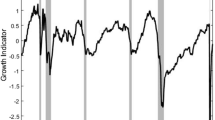Summary
The paper considers a dynamic programming formulation of the accounts receivable problem for single outstanding amounts. An optimal collection policy can be computed efficiently by invoking a “planning horizon” result that determines a time period beyond which the decision process cannot extend. The optimality of so called monotone policies is shown under rather intuitive restrictions on the collection probabilities.
Zusammenfassung
Das Problem der Kreditüberwachung wird als einfaches dynamisches Programm formuliert. Unter Ausnutzung endlicher oberer Schranken für den Planungshorizont, die einen Zeitpunkt determinieren, über den hinaus der Entscheidungsprozeß nicht ausgedehnt werden muß, können einfache Strategien für die zeitliche Koordination von Mahnaktionen hergeleitet werden. Es wird gezeigt, daß unter recht realitätsnahen Annahmen über die Rückzahlungswahrscheinlichkeiten sogenannte monotone Politiken optimal sind.
Similar content being viewed by others
References
Bierman H, Hausman WH (1970) The credit granting decision. Manag Sci 16:B519–532
Corcoran AW (1978) The use of exponentially-smoothed transition matrices to improve forecasting of cash flows from accounts receivable. Manag Sci 24:732–739
Cyert R, Davidson H, Thompson SL (1962) Estimation of the allowance for doubtful accounts by Markov chains. Manag Sci 8:287–303
Dirickx YMI, Wakeman L (1976) An extension of the Bierman-Hausman model for credit granting. Manag Sci 22:1229–1237
Forgy EW, Meyers JH (1963) The development of numerical credit evaluation systems. J Am Stat 58:799–806
Kistner K-P, Dirickx YMI (1980) Monotone Strategien zur Kontrolle von Außenständen. In: Hauptmann H, Schenk K-E (Hrsg) Anwendungen der Systemtheorie und Kybernetik in Wirtschaft und Verwaltung. Duncker & Humblot, Berlin, S 64–79
Liebman LH (1972) A Markov decision model for selecting optimal credit control policies. Manag Sci 18:519–525
Wakeman L (1974) Bayesian methods in credit management, unpublished Ph.D.-Dissertation, M.I.T.
Author information
Authors and Affiliations
Additional information
This research was initiated during Klaus-Peter Kistner's stay at the European Institute for Advanced Studies in Management, Brussels, and completed during Yvo Dirickx's visit at Bielefeld University
Rights and permissions
About this article
Cite this article
Dirickx, Y.M.I., Kistner, K.P. A note on dynamic programming in accounts receivable management. OR Spektrum 3, 221–224 (1982). https://doi.org/10.1007/BF01719790
Received:
Accepted:
Published:
Issue Date:
DOI: https://doi.org/10.1007/BF01719790




